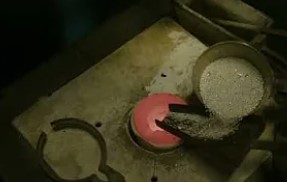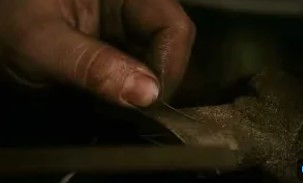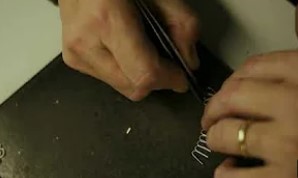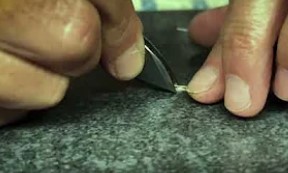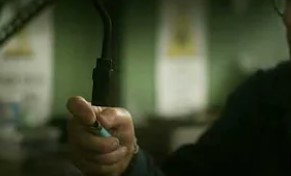It is the operation that allows the transformation of raw metal into rods intended for processing.
The rods are passed through a machine to be further thinned to a 2mm section.
To obtain greater malleability the rods are heated (annealed) to the limit of the melting temperature.
The product, increasingly similar to a wire, is further drawn by passing through graduated holes whose surfaces are covered with industrial diamond (rubies) in order to obtain the desired section.
Subsequently we move on to twisting which allows two separate silver threads to be assembled into a long braid, thus creating the “garnet thread”.
Using threads of greater consistency thanks to the silver-copper alloy, the craftsman shapes the object according to the desired design. During this operation the skilled filigree artist makes use of very particular tools designed by himself (sticks).
A curiosity teaches us that in Genoa, a seaside city, this framework or frame received the name of hull by analogy with the hull of a ship which is filled after launching or hulling.
The small elements obtained from the twisted thread and intended for filling the hull maintain a traditional nomenclature among the artisans of Campoligure that survives over time, with the persistence of a pseudo-dialect terminology.
The various shapes given to the very thin threads previously twisted and laminated according to the desired arrangements are called: rizzetti (curls), panetti (rolls), resche (fish bones), ramette (small branches).
Both the shaping of the hull and the subsequent filling operation are carried out entirely by hand, mainly with the use of a particular tweezers called bruscella and carried out on the typical black glossy ceramic tile, the ciapella.
The filling elements, by mutual pressure, remain in place on their own until welding allows them to compact and join the filling with the hull.
To create the finished object, many welding steps are necessary and each time the object or its parts must be whitened to eliminate impurities and the darkening effect generated by the flame.
The various parts that make up the piece are prepared separately and then joined together. It should be kept in mind that the processing mainly takes place on a flat surface and only subsequently is the three-dimensional shape given with the aid of special steel plates, the buttonholes, with which the padding is obtained in a hemispherical, daisy, star shape…
